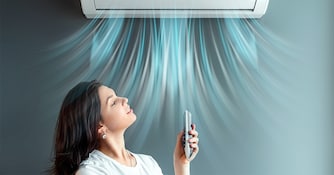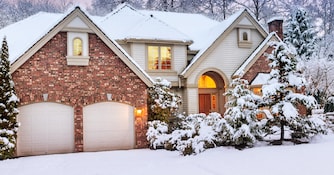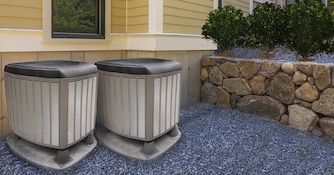
Home Air Filters 101
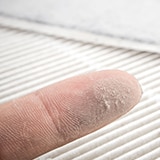 Have you ever walked toward a window when the sun is shining just right and noticed the countless dust particles floating in the air? The sight may have even tempted you to hold your breath for a few moments, hoping you wouldn’t inhale whatever is there.
Have you ever walked toward a window when the sun is shining just right and noticed the countless dust particles floating in the air? The sight may have even tempted you to hold your breath for a few moments, hoping you wouldn’t inhale whatever is there.
The sun shines a light on the fact that our homes are littered with dust and debris that we usually never see. Dust can come from anywhere—people, pets, the outdoors—and not only cause allergies but can also damage your furnace and air conditioning system.
That’s where your home HVAC air filter comes in. Its purpose is to clean air entering your furnace or air handler of dust and other particles, so they don’t damage the system. A secondary benefit, depending on the type of home air filter you buy, is the ability to improve the quality of the air you breathe.
How Do HVAC Filters Work?
To understand the role of a furnace or a/c filter, you must first understand how a furnace or air handler works.
Basically, a furnace (used in most of the U.S.) is an air handler with a burner inside. Indoor air is sucked into return vents and flows through ductwork into the air handler, where it is conditioned (heated, cooled or circulated) and blown through supply vents around the home.
The air filter is placed in between the return air duct and the air handler assembly so it can capture particles from the passing air.
House air filters are composed of fine fibers that are tangled together to both block and capture particles in the air. Just like a fast-moving car would eventually careen off a curving road, the fast-moving particles’ inertia causes them to crash and get trapped in the air filter’s fibers.
The relationship between how much dirt the filter traps and airflow determines the filter's efficiency.
The tighter the filter fibers are strung together, the more effectively the air filter will capture indoor particles, and the less air will get through. This effectiveness is rated with a Minimum Efficiency Reporting Value (MERV).
What Does MERV Mean?
 MERV ratings were developed by the American Society of Heating, Refrigerating and Air-Conditioning Engineers (ASHRAE) to rate filter effectiveness. A higher MERV suggests more particles will be captured, and airflow will be more restricted. A lower MERV means fewer particles will be captured, and airflow will be less restricted.
MERV ratings were developed by the American Society of Heating, Refrigerating and Air-Conditioning Engineers (ASHRAE) to rate filter effectiveness. A higher MERV suggests more particles will be captured, and airflow will be more restricted. A lower MERV means fewer particles will be captured, and airflow will be less restricted.
MERV scores are based on the filter’s ability to capture particles of varying sizes.
- Low-MERV filters, with scores of 1 to 4, prevent large particles like dust mites and carpet fibers from entering the system but aren't very effective at catching tiny allergens or germs.
- Medium-MERV filters, with scores of 5 to 12, block finer particles like mold spores and auto emissions but begin significantly impeding airflow at the upper end.
- High-MERV filters, with scores of 13 to 20, block all bacteria, tobacco smoke, and even some larger viruses. These high-MERV filters are often used in hospitals and require significant HVAC system adjustments due to their airflow restrictions.
It’s important to remember that the primary purpose of a furnace air filter is to protect your system. If dust particles were to accumulate on your blower and internal components, they would cause major damage.
To dramatically improve indoor air quality, you could use a higher-MERV filter, but it's crucial to consider if your current system can handle it. If not, you would need to purchase an additional indoor air quality system.
Air Filters and Your HVAC System
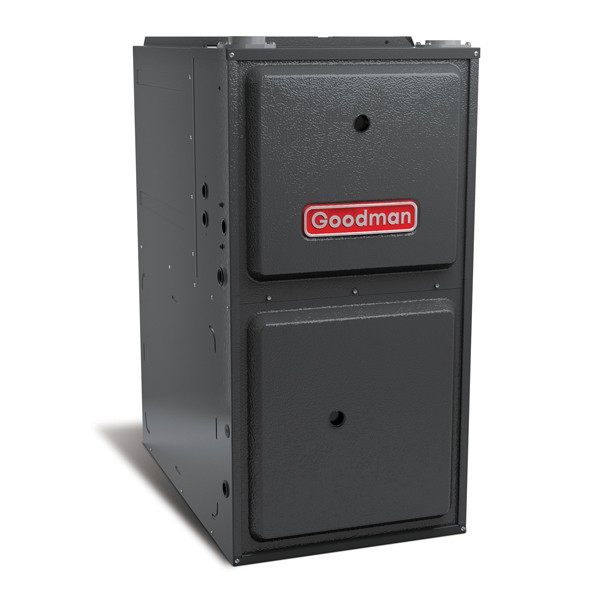 As mentioned, higher-MERV air filters (typically MERV 8 and above) significantly restrict air flow because the fibers are spun tightly to capture the smallest particles, like allergens and bacteria.
As mentioned, higher-MERV air filters (typically MERV 8 and above) significantly restrict air flow because the fibers are spun tightly to capture the smallest particles, like allergens and bacteria.
Since your HVAC system is designed to deliver a specific amount of airflow (CFM) to function properly, reducing the airflow will choke the system, causing it to work harder and inefficiently.
When this happens, there won’t be enough air for the blower to move through the system, and it will need to use more energy. Imagine using a bicycle pump to inflate your car tires. You would have to pump incredibly hard to get them pressurized, and eventually, you wouldn't have enough strength.
In some cases, limited airflow could cause the heat exchanger to overheat and crack, releasing carbon monoxide into the home. In the case of an air conditioner or heat pump, the evaporator coil could freeze, which in turn would damage the compressor.
That’s why you need an appropriately-rated filter for your furnace or air handler. If you require the extra filtration and indoor air quality that only the highest MERV ratings can provide, you should consider a supplemental air cleaner.
Types of HVAC Filters
The following are the main types of air filters you can buy for your HVAC system.
Fiberglass (Builder-Grade) Media Filters
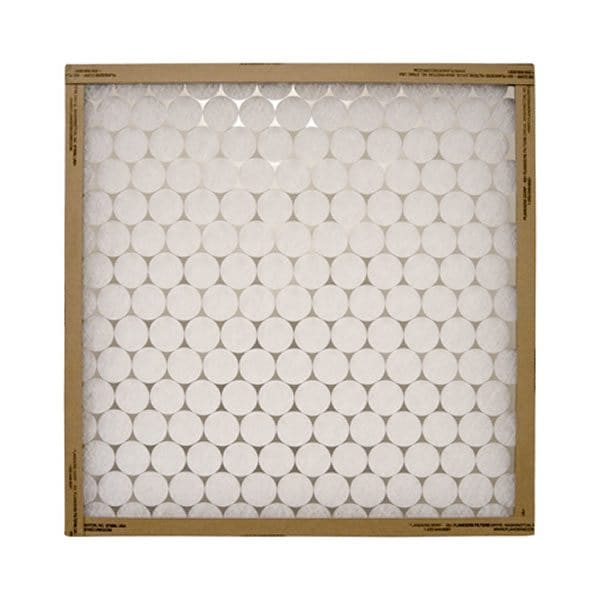 These are the least expensive, most basic furnace air filters, typically costing just a few dollars. With a MERV rating of 1 to 4, they trap only the largest particles in the air but do not restrict airflow. They can work well as pre-filters, installed at return air ducts before the air reaches the primary filter. Replace them every month or sooner.
These are the least expensive, most basic furnace air filters, typically costing just a few dollars. With a MERV rating of 1 to 4, they trap only the largest particles in the air but do not restrict airflow. They can work well as pre-filters, installed at return air ducts before the air reaches the primary filter. Replace them every month or sooner.
They may provide adequate protection for your system, but some particles will inevitably get through. If you’re looking to improve indoor air quality, fiberglass filters may disappoint you. Since they don't capture most particles, you will need increased furnace maintenance and more frequent filter replacement.
Pleated Media Filters
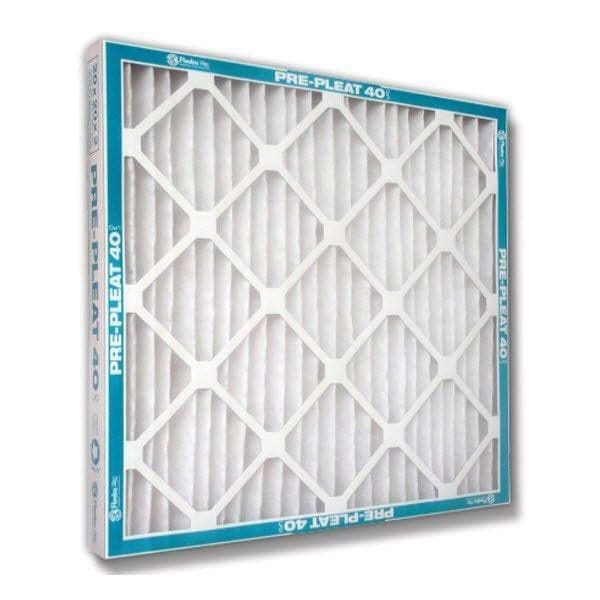 Pleated furnace air filters are slightly more expensive than fiberglass filters, but are much more effective at capturing smaller particles, including those that cause allergies. MERV ratings can vary but will typically be higher than 5. They can last up to 90 days for greater convenience, but having pets in the house or allergies can reduce this time.
Pleated furnace air filters are slightly more expensive than fiberglass filters, but are much more effective at capturing smaller particles, including those that cause allergies. MERV ratings can vary but will typically be higher than 5. They can last up to 90 days for greater convenience, but having pets in the house or allergies can reduce this time.
The highest MERV pleated filters are known as HEPA filters and are used in hospitals and medical facilities to filter out up to 99.99% of particles. They can be used in residential applications with the addition of auxiliary indoor air quality equipment.
Don't Go Unfiltered
Although it’s easy to install your filter and forget it exists, never forget to change it out as it's a vital component of furnace maintenance. A clogged filter will not only reduce airflow but will be ineffective for capturing more particles.
Remember, the frequency of air filter replacement depends on how much dust, pet dander, and overall particulate there is in your home. In general, you'll need to replace them every month for fiberglass filters and every 90 days for pleated ones, and we can help with our filter subscription program.
Now that you know the basics of how furnace and ac air filters work, it’s time to learn how to choose the right one for your home.


